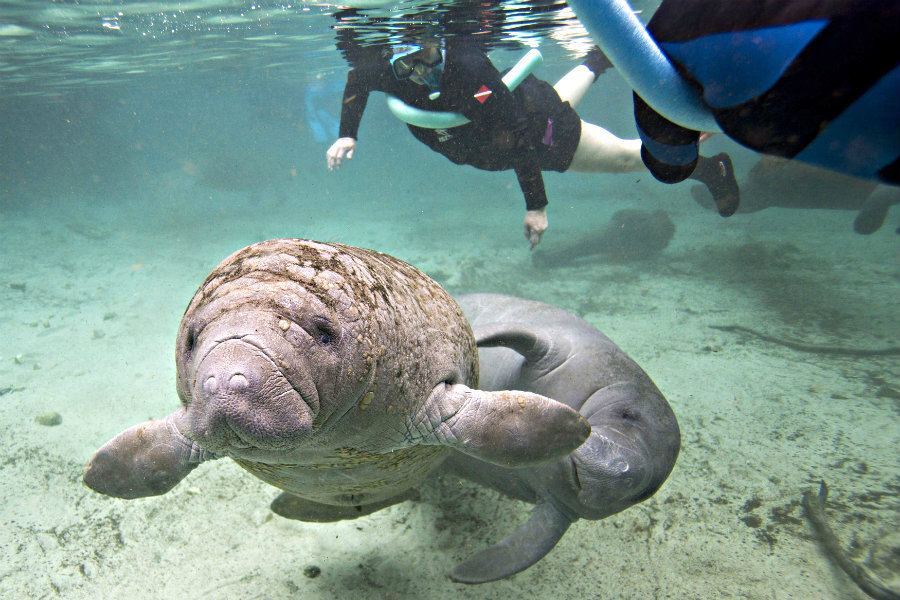As fall nears, how will the Cape Cod manatee fare?
Loading...
Beachgoers on Cape Cod in August enjoyed a special treat as a massive manatee meandered along the coast. Now, experts say it is time for the eight-foot, 1,500-pound animal to go home.
It is uncommon, but not unheard of, for manatees to travel into northern waters. But with a low tolerance for cold water, manatees are particularly susceptible to the coming temperature change as fall approaches.
“When we start to get into the cooler weather, which is not that far away for you folks,” the US Fish and Wildlife Service’s Chuck Underwood told The Boston Globe, “that’s where we begin getting really concerned.”
The massive gray animals, known as “sea cows” for their size and docility, are common off the coast of Florida and the southeastern United States. Although they are currently listed on the endangered species list, US wildlife officials petitioned for their status to be downgraded to threatened after populations rebounded in Florida.
Typically, manatees migrate from the coast of Brazil to the mid-Atlantic seacoast. Waters colder than 68 degrees F. are hard for manatees to endure. Despite their massive size, manatees have relatively little body fat, and lower ambient temperatures will trigger the animal to stop feeding, similar to alligators. If exposed for an extended period of time to water under 68 degrees F., manatees can perish.
Cape Cod’s current visitor has been in the neighborhood for about a month. According to the National Oceanic and Atmospheric Administration (NOAA), the average water temperature for Wood’s Hole, Mass., (on the Cape Cod coast) in the second half of August is 71 degrees F. The current water temperature is around 75 degrees F., an unseasonably warm measurement.
Currently, researchers are unsure as to exactly why manatees, who can live for 60 years, are venturing farther north in greater numbers. Some manatees simply like to roam. A manatee named Chessie was airlifted out of Chesapeake Bay in 1994, only to travel further north to Rhode Island in 1995. Climate change could also play a role, as warming ocean temperatures make manatees more comfortable in non-traditional habitats.
While these warm temperatures are unusual, however, temperatures will still plummet in the fall and winter months. Previous efforts to redirect wandering manatees in early fall haven't always ended well.
In 2008, a manatee that locals named Dennis appeared off the coast of Cape Cod. Although sightings at first generated excitement, officials quickly became concerned that water temperatures were too cold for the animal. Experts attempted an emergency rescue by taking Dennis to Sea World in Florida, but he died from the effects of hypothermia shortly before arrival.
In 2009, experts said that Ilya the manatee was much more robust than Dennis when he left Cape Cod’s rapidly chilling waters in early fall. Officials later found Ilya freezing in the waters off the coast of New Jersey in October. He was airlifted to Miami by a Coast Guard helicopter, where he eventually recovered after care at the Miami Seaquarium.
According to Save the Manatees, a charity devoted to manatee protection, manatees are especially at risk in waters outside of their traditional migration zones, such as Cape Cod. These areas are less likely to have policies in place to protect them from several of the greatest risk factors they face – boat strikes and fishing bycatch.
Cape Cod boaters have been warned to steer clear of the manatee. Still, wildlife officials are keeping an eye on Cape Cod’s yet-to-be-named guest. If the Cape's latest visitor overstays its vacation, the US Fish and Wildlife Service will mount a rescue attempt.






